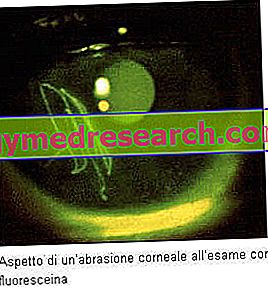Related articles: Osteomyelitis
Definition
Osteomyelitis is a painful infection of a bone, which causes the inflammation and destruction of the same. This condition can be caused by bacteria, mycobacteria or fungi that spread contiguously from infected tissue or open wounds (eg deep traumatic injuries, foreign bodies, exposed fractures or complications of orthopedic surgery). Sometimes, these microorganisms are carried by the blood from an infectious focus located elsewhere (hematogenous osteomyelitis, eg in case of pneumonia and urinary or dental infections).
Ischemia and deep decubitus ulcers can predispose to osteomyelitis. Other risk factors are diabetes, peripheral vascular disease, immunosuppression and bacteremia.
Most common symptoms and signs *
- Skin abscess
- Asthenia
- Increase in the ESR
- Bacteremia
- Chills
- Muscle cramps
- Skin discoloration
- Knee pain
- Bone pain
- Articolar pains
- Erythema
- Temperature
- Pus formation
- Bone fractures
- Sore legs
- Livedo Reticularis
- Backache
- Headache
- Osteopenia
- Weight loss
- Bedsores
- Rheumatism
- Joint stiffness
- Bone Sclerosis
- Night sweats
- thrombocytosis
- Bone swelling
Further indications
The main symptom of osteomyelitis is the appearance of very intense, pulsating bone pain. There is also swelling, erythema and heat of the overlying skin, and local tenderness accentuated by minimal contact. Acute osteomyelitis is also characterized by systemic symptoms (unlike the chronic form) such as weight loss, fatigue, headache, fever with chills and limitation of movements. Depending on the site affected, other symptoms may occur, such as cutaneous abscesses, back pain, arthritis or neurological dysfunction. Furthermore, the inflammatory process tends to occlude local blood vessels, causing bone necrosis and the spread of infection. Therefore, abscesses or, in the most serious cases, bacteremia can occur.
Chronic osteomyelitis causes occasional or cyclic bone pain that lasts for months or years, fistulas with purulent secretion, skin discoloration, bone deformities and local or general functional impairment. Necrotic bone structures can undergo pathological fractures.
The diagnosis is based on diagnostic imaging studies (standard RX, CT, MRI and bone scintigraphy with technetium-99m), blood count, bone biopsy, culture tests and antibiogram. The ESR and the C-reactive protein are usually elevated.
The treatment of osteomyelitis involves the administration of antibiotics selected based on the pathogen in question; sometimes surgery may be necessary. This last therapeutic option is indicated when large bony regions are destroyed (therefore to remove the necrotic tissue) or to drain an abscess (especially if paravertebral or epidural).



